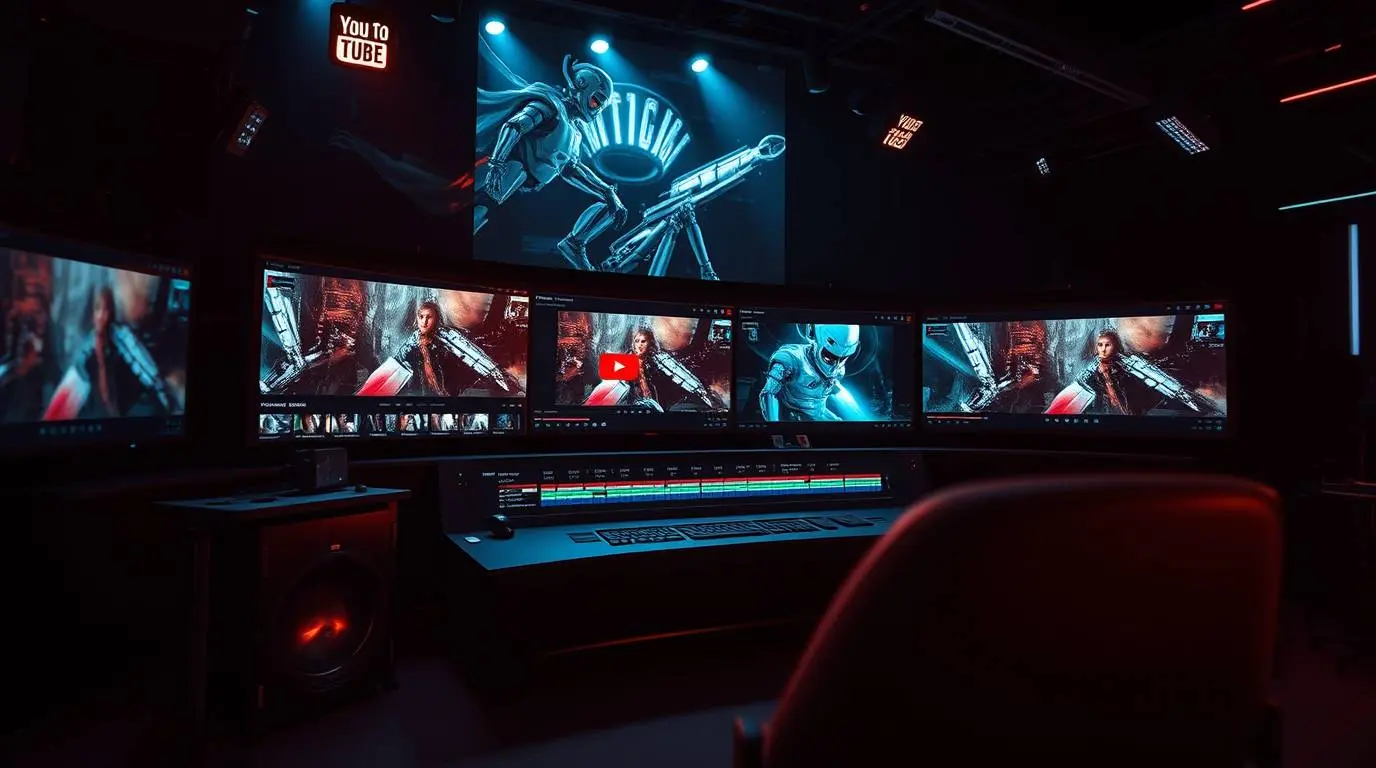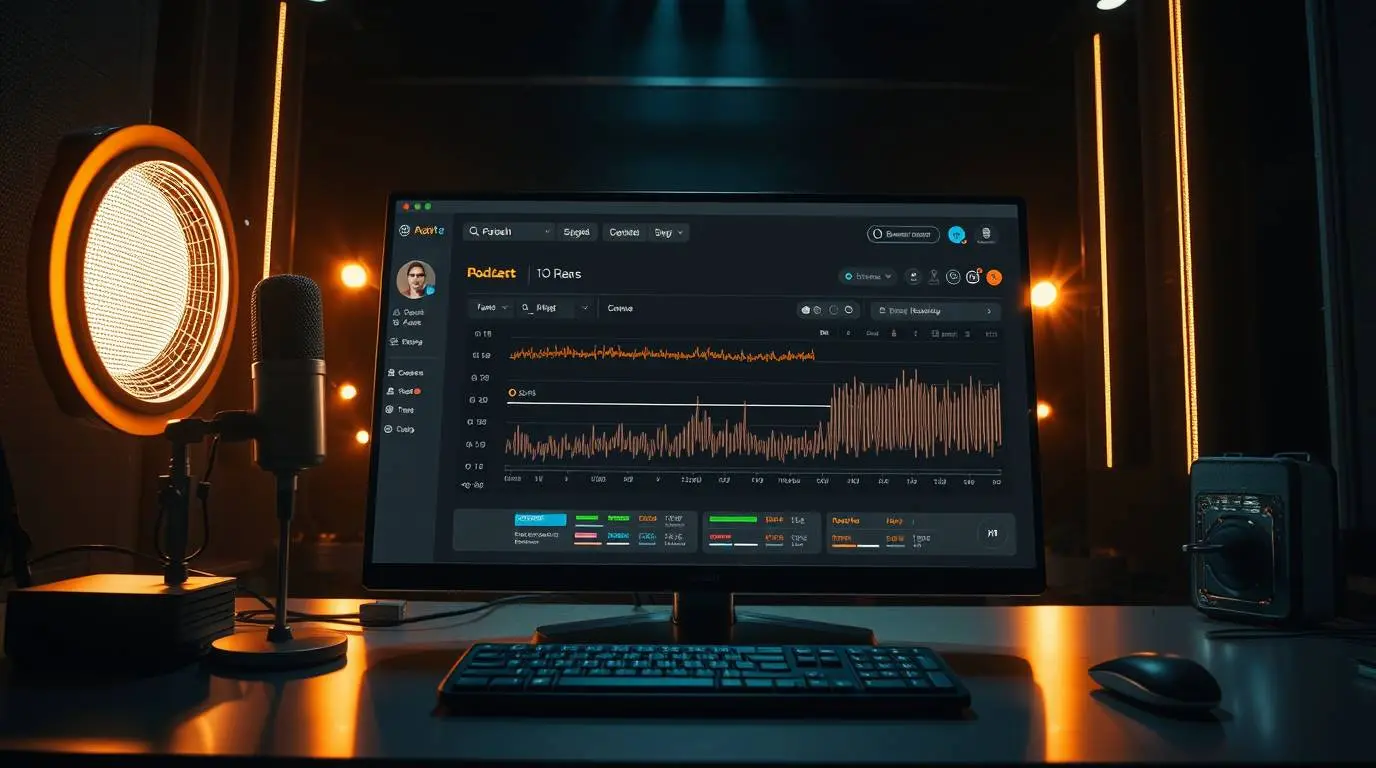Physical Address
304 North Cardinal St.
Dorchester Center, MA 02124
Physical Address
304 North Cardinal St.
Dorchester Center, MA 02124

Discover the top 15 AI content creation tools for 2025 to write faster, design smarter, and grow your brand online using automation.
Are you struggling to keep up with your content demands? Feeling the pressure to consistently produce high-quality articles, videos, and social media posts? You’re not alone. I’ve been there too, overwhelmed by deadlines and creative blocks. But here’s the good news – AI content creation tools have completely transformed how I approach my work, and they can do the same for you.
Picture this: It’s Sunday evening, and you’re staring at your computer screen, desperately trying to draft content for the upcoming week. Your mind is blank, the cursor blinks mockingly, and that familiar sense of dread sets in. Sound familiar?
I remember when this was my weekly ritual until I discovered the power of AI content creation tools. These innovative technologies have revolutionized how we generate content, making it faster, more efficient, and surprisingly creative.
In today’s digital landscape, content isn’t just king—it’s the entire kingdom. Whether you’re a freelancer building your personal brand, a side hustler looking to grow your online presence, or a small business owner trying to compete with bigger players, creating consistent, high-quality content is non-negotiable.
But here’s the reality: creating excellent content takes time—a luxury many of us don’t have. That’s where AI content creation tools come in, acting as your personal content assistant, idea generator, and productivity booster all rolled into one.
In this comprehensive guide, I’ll walk you through everything you need to know about AI content creation in 2025—from understanding how it works to choosing the right tools for your specific needs. Plus, I’ll share my top 15 AI content creation tools that can transform your content strategy starting today.
Let’s dive in and discover how AI can help you create better content in less time!

AI content creation refers to the process of using artificial intelligence technologies to generate, optimize, or enhance various types of content. At its core, these tools use sophisticated AI models (primarily large language models or LLMs) trained on massive datasets to understand context, generate human-like text, create images, produce videos, and even compose music.
How does it actually work? Most AI content tools operate on a similar principle:
What makes modern AI content creation tools so powerful is their ability to understand context, maintain coherence throughout longer pieces, and adapt to different writing styles and tones. They’re not just regurgitating information—they’re synthesizing it in ways that feel uniquely tailored to your needs.
As Forbes reports, the latest generation of AI content tools can reduce content creation time by up to 70%, allowing creators to focus more on strategy and less on execution.
AI content creation isn’t limited to just writing blog posts. Today’s tools can generate an impressive variety of content types:
The versatility of AI content creation is what makes it such a valuable asset for creators and businesses. Whether you need a 2,000-word in-depth article or a quick social media graphic, there’s an AI tool designed specifically for that purpose.

I’ve personally experienced the transformative impact of incorporating AI into my content workflow. Here are the eight most significant benefits you can expect:
| Traditional Content Creation | AI-Assisted Content Creation |
|---|---|
| 6-8 hours for a blog post | 1-2 hours for a blog post |
| Limited by personal knowledge | Enhanced by AI’s broad data |
| Inconsistent production schedule | Reliable content pipeline |
| Creative blocks delay work | Prompts help overcome blocks |
| Language limitations | Multilingual capabilities |
| High cost for outsourcing | Lower subscription costs |
With hundreds of AI tools flooding the market, choosing the right one can feel overwhelming. Here’s a practical framework I use to evaluate AI content creation tools:
Before diving into specific tools, clarify what type of content you need to create most frequently:
Some AI tools offer simple, user-friendly interfaces perfect for beginners, while others provide more complex features that require a steeper learning curve.
AI tools range from free to several hundred dollars per month. Determine your budget and look for options that provide the best value within that range.
Consider how the AI tool will fit into your existing workflow. Does it need to integrate with other platforms or tools you already use?
Most AI content tools offer free trials or freemium versions. Take advantage of these to test the tool before making a financial commitment.
Remember that no single AI tool excels at everything. Many content creators use a combination of specialized tools for different aspects of their content strategy. For example, you might use one tool for blog writing, another for image generation, and a third for video production.
If you’re looking to build a sustainable AI side hustle, choosing the right tools becomes even more critical as they’ll form the foundation of your service offerings.
After testing dozens of AI content tools and gathering feedback from fellow creators, I’ve compiled this list of the 15 most powerful AI content creation tools for 2025. Each tool has been selected based on performance, ease of use, and value for money.
Best for: Written content across multiple formats
Copy.ai has become my go-to tool for creating everything from blog posts to social media content. Its intuitive interface makes it perfect for beginners, while its advanced features satisfy experienced content creators.
Key features:
Pricing: Free plan available; paid plans start at $36/month

Best for: Visual content creation
Canva has evolved from a simple graphic design tool to a powerful AI-powered creative platform. Its Magic Media feature can generate custom images from text prompts, making it invaluable for creating social media graphics and marketing materials.
Key features:
Pricing: Free plan available; Pro plan at $12.99/month
Best for: Versatile content ideation and drafting
ChatGPT remains one of the most versatile AI writing assistants available. I use it daily for brainstorming ideas, drafting outlines, and getting unstuck when facing writer’s block.
Key features:
Pricing: Free version available; ChatGPT Plus at $20/month
Best for: Marketing copy and brand-specific content
Jasper AI excels at creating marketing content that aligns with your brand voice. Its templates and frameworks make it easy to create high-converting copy for various purposes.
Key features:
Pricing: Creator plan starts at $39/month
Best for: Video content creation without technical skills
InVideo allows you to create professional-quality videos without any video editing experience. It’s perfect for creating social media content, product demonstrations, and educational videos.
Key features:
Pricing: Free plan available; paid plans start at $15/month
Best for: Avatar-based video content
Synthesia specializes in creating avatar-based videos from text scripts. It’s incredibly useful for creating training materials, product demos, and personalized video messages.
Key features:
Pricing: Personal plan starts at $29/month
Best for: Professional voiceovers and narration
Murf’s AI text-to-speech technology creates incredibly natural-sounding voiceovers in multiple languages and accents. I use it for podcast intros, video narration, and audiobook creation.
Key features:
Pricing: Free plan available; paid plans start at $29/month

Best for: Audio and video editing
Descript revolutionizes audio and video editing by making it as simple as editing a text document. Its transcription-based editing approach saves hours of traditional editing time.
Key features:
Pricing: Free plan available; paid plans start at $12/month
Best for: SEO-optimized blog content
Writesonic specializes in creating long-form content optimized for search engines. Its Sonic Editor makes it easy to generate, edit, and optimize blog posts in one place.
Key features:
Pricing: Free trial available; paid plans start at $16/month
Best for: Content editing and enhancement
While not a content generator itself, Grammarly’s AI-powered editing suggestions dramatically improve the quality of your content. It catches not just grammar issues but also tone inconsistencies and readability problems.
Key features:
Pricing: Free version available; Premium starts at $12/month
Best for: SEO content optimization
Surfer SEO provides AI-driven content optimization to help your articles rank higher in search results. Its content editor gives real-time feedback as you write, ensuring your content meets SEO best practices.
Key features:
Pricing: Essential plan starts at $69/month
Best for: Ensuring content originality
As AI-generated content becomes more common, ensuring originality becomes increasingly important. Originality.ai helps detect AI-generated content and check for plagiarism.
Key features:
Pricing: Pay-as-you-go options available; subscriptions start at $24.95/month
Best for: Turning blog posts into videos
Lumen5 excels at transforming text-based content into engaging videos. I use it to repurpose blog content for social media platforms that favor video content.
Key features:
Pricing: Free plan available; paid plans start at $29/month
Best for: Creating short-form video content
Pictory helps create short, engaging videos from long-form content. It’s perfect for creating highlight clips from webinars, podcasts, or lengthy interviews.
Key features:
Pricing: Starter plan at $19/month
Best for: Research-based content creation
Perplexity AI combines the power of a search engine with AI content generation, making it invaluable for creating well-researched, factual content with proper citations.
Key features:
Pricing: Free version available; Pro plan at $20/month
The quality of AI-generated content depends significantly on how well you prompt the AI. Here are some best practices I’ve developed after thousands of interactions with AI content tools:
Vague prompts lead to vague outputs. Include details about:
Example of a weak prompt: “Write about AI tools.” Example of a strong prompt: “Write a 1000-word blog post about AI content creation tools for freelance writers. Use a conversational tone, include 5 specific tool recommendations with pricing, and end with actionable next steps.”
Structure prompts using the Attention, Interest, Desire, Action (AIDA) framework:
When possible, include examples of content you admire to help the AI understand your preferences.
For longer content, create separate prompts for different sections rather than trying to generate everything at once.
Treat AI content creation as a collaborative process. Generate content, review it, provide feedback, and ask for revisions.
If you’re looking to offer AI content creation as a freelance service, mastering prompt engineering becomes even more valuable as it directly impacts the quality of deliverables for your clients.
While AI tools can create impressive content, they do have limitations. Here’s how to ensure your AI-generated content remains accurate and original:
AI can occasionally generate “hallucinations” or false information that sounds plausible. Always verify facts, statistics, and claims before publishing.
Enhance AI-generated content with your personal experiences, case studies, and unique perspectives that the AI cannot provide.
Even when generating original content, it’s good practice to verify uniqueness using tools like Copyscape or Originality.ai.
AI tools may reference outdated information. Ensure all statistics and references are current and relevant.
Review and edit AI-generated content to ensure it aligns with your established brand voice and messaging.
According to a study by HubSpot, 65% of marketers who use AI for content creation report spending significant time editing and fact-checking the content before publication.
Despite its many advantages, AI content creation isn’t without challenges:
As Entrepreneur magazine notes, “AI content creation tools are powerful assistants, not replacements for human creativity and judgment.”
This is perhaps the most common question I hear, and my answer is consistently: no, AI won’t replace human creators, but it will transform how we work.
The future of content creation isn’t AI vs. humans—it’s AI-enhanced humans achieving results that neither could accomplish alone. AI excels at:
Meanwhile, humans remain essential for:
The most successful content creators in 2025 and beyond will be those who learn to collaborate effectively with AI, using it to handle the heavy lifting while focusing their human creativity on strategic direction and emotional resonance.
As someone who’s built an AI-powered business, I’ve found that AI tools haven’t reduced my role—they’ve amplified it, allowing me to create more impactful content at a scale I never thought possible.

AI content creation represents one of the most significant shifts in the creative landscape of our time. Whether you’re a freelancer looking to increase productivity, a side hustler building an online presence, or a business owner trying to scale your content marketing, AI tools offer unprecedented opportunities to create more content in less time.
Here’s how to get started today:
Remember, the goal isn’t to remove yourself from the creative process but to leverage AI as a powerful collaborator that handles the heavy lifting, freeing you to focus on strategy and creative direction.
What content challenges are you facing that AI might help solve? Are you already using AI content tools? I’d love to hear about your experiences in the comments below!
Want to learn more about how AI can boost your income? Check out our guide to making money with AI in 2025 and discover how AI can generate passive income.